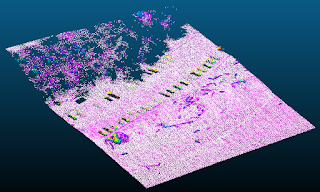 Lidar point clouds normally come with elevations above sea level (or some other datum), which is
Lidar point clouds normally come with elevations above sea level (or some other datum), which is extremely useful. However, we can convert the Z-values into a height above the ground as way to add another layer of data so that we can measure things like average tree heights, examine building heights., or (one thing I do a lot) filter the points to so that we only see points in a specific height range above the ground. This last application is what we'll be covered here and it's really useful to examine river channels below dense vegetation.

